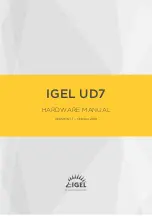
– 152 –
C-108A CALL CONTROL VECTOR - ACD
SERVICE CONDITIONS
1. The programming of CCVs is not examined by the ACD system. It is the responsibility of the user to provide a
logical sequence of instructions, which produce the desired call handling, in every CCV.
2. An announcement is not guaranteed to be available from its beginning, when an Announcement instruction is
encountered. An additional Pause instruction may need to be programmed in order to provide proper sequencing
through the CCV. Refer to “ANNOUNCEMENTS-ACD [A-80A]” for additional information.
3. The If not Queued Goto or Busy instruction is applicable to DID & Tie type trunks. In the case of ringdown
trunks, ringback tone is controlled by the C.O.; therefore, busy tone cannot be given to the caller.
4. A “Transfer To” step in the CCV may send a caller off to any number within the number plan established for
the System. It is not feasible to describe the exact operation of such a transfer to all possible numbers under all
possible conditions. Many of the cases are described below.
a.
When the target is a UCD pilot number in the System: If a member of the UCD is available, the call will
be transferred. If there are no members available in the UCD, the call remains in the ACD side and contin-
ues the CCV with the step following the “Transfer To”. The call
will not queue
to the UCD group even if
queuing in the UCD is enabled.
b. If the overflow destination is an ordinary station: If the station at the overflow destination is a member sta-
tion of a station hunting group:
c.
If transfer service is set for the station at the overflow destination:
d. When the station at the target is busy, the Transfer-To instruction may be retried with a Goto instruction.
e.
When the station at the target is in make-busy state or lockout state, no transfer takes place.
f.
If the overflow destination is an attendant console: Transfer is executed only when the attendant console
group is in Day mode, or when a night attendant console is provided and is in service during Night mode.
g. No transfer will take place when the attendant console group is in Night mode and no night attendant con-
sole is provided.
h. If the transfer target is an external line:
i.
To designate the external line number for the overflow destination, an abbreviated code for SPEED
CALLING - SYSTEM-ACD [S-3A] is used.
j.
A maximum of 1000 abbreviated codes can be assigned for the ACD.
k. For selecting external routes, LCR can be used.
l.
When an overflow has encountered all external trunks busy, it may be retried with a Goto instruction.
m. When an overflow has encountered all senders busy, it may be retried with a Goto instruction.
n. Once an ACD call has been connected to an external trunk, it may not be distributed to agent positions at
the overflow origination side even if the destination distant office happens to be busy.
o. Tandem connections which release on both the incoming route and the outgoing route cannot be super-
vised and should be restricted by means of System Data programming.
Summary of Contents for SV8500
Page 1: ...FP85 104 S1 Data Programming Manual ACD NWA 041687 001 ISSUE 1 0...
Page 12: ...PL 6 This page is for your notes...
Page 130: ...114 A 31A ABANDONED CALL SEARCH ACD PROGRAMMING None...
Page 364: ...348 CHAPTER 6 This page is for your notes...
Page 409: ...Printed in Japan 0807 010...
Page 410: ......
















































